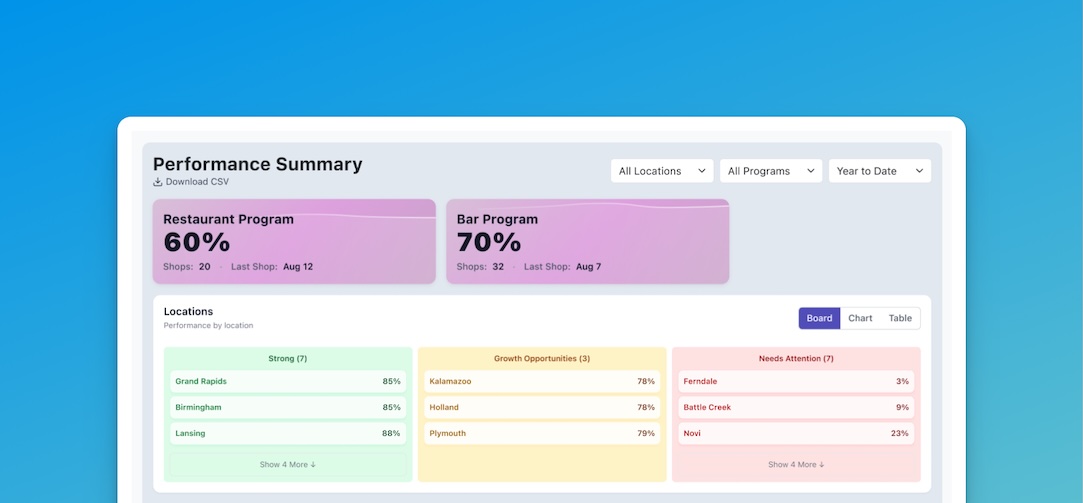
It’s time for a perspective shift—negative customer service reviews can actually be extremely beneficial to business owners.
It’s tempting to feel disheartened or dismissive of critical feedback. But it can provide a wealth of valuable insight for improving your business. With appropriate management it can help your customers understand services and offerings. Likewise it can often become a compass for you to learn how your business impacts customers. Plus shifting your perspective from a negative customer service review to a positive growth experience will help you in the long run.
Whether customer service reviews are positive or negative you can still utilize them to your advantage. Let’s discuss how this feedback affects your business and how to address your customers after you receive a critical review. Most importantly we’ll dive into how you can strengthen your business strategy from these customer service reviews.
The Reality of Negative Customer Service Reviews
Negative reviews are bound to happen. Every business will encounter some form of critical feedback eventually. A lapse can lead to dissatisfaction even when you are committed to providing excellent customer service and exceptional products.
Why Do Negative Customer Service Reviews Happen?
It’s not easy to receive critical feedback. Sometimes we’re stunned and wonder why it’s happened. In a surprising survey 49% of customers shared their poor experience with a business.
Specifically there are several reasons why your customer might leave you a negative review:
- Communication breakdowns: Miscommunication or unclear information can frustrate customers especially if their concerns are not addressed.
- Policy disputes: Some customers might leave negative customer service reviews if they feel your rules or policies don’t meet their needs.
- High or unrealistic expectations: Some customers may leave a poor review because of unrealistic expectations due to changing customer standards or increased competition.
- Human error: Mistakes like defects service delays or communication issues happen. Even minor errors can lead to a negative experience.
- External factors out of your control: Third-party services shipping delays and global events can affect customer satisfaction leading to critical feedback.
The Concerning Effects of Negative Customer Service Reviews
According to several sources it can require anywhere from 10 to 40 positive reviews to counteract the damage done by a single negative review. The severity of the feedback does play a role but it can still cause damage over time—especially if it’s left with no response.
To list there are several effects poor reviews can have on your business:
- Damaged brand reputation and trust
- Lower search rankings
- Customer losses
- Decreased sales
- Impacted staff morale
Additionally the shock of receiving poor feedback from a customer might cause several emotions to bubble to the surface. You might be concerned with these effects or wonder why someone would say something so negative. Those initial feelings are valid—but stepping back and shifting your perspective is vital for long-term business growth.
The glimmer of hope here is that a bad review isn’t the end of the world. In fact they can be more beneficial than you think. Instead of seeing a poor customer service review as a setback frame this experience as a unique opportunity to make your business look good. Plus the feedback gives you insights into your customer's needs and preferences and can uncover concerns you were unaware of.
Unexpected Benefits of Negative Customer Service Reviews
As we’ve said critical reviews provide some surprisingly powerful benefits that can help your business. Here are just a few of them:
- Added authenticity: Some studies have shown that negative reviews help a company appear more genuine to new customers. Unlike fake or farmed positive reviews a balance between positive and negative feedback builds credibility.
- Increased website time and conversion: Consumers spend four times as long on a website when interacting with negative reviews. This resulted in a whopping 67% increase in conversion rates.
- Changed perspective: Over 50% of respondents ended up changing their view on the business after the company responded to their concerns.
- More likely visitors: Up to 45% of consumers reveal they’d likely visit a business more if they responded to bad reviews.
Turn the Negative into a Positive
With the inevitability of poor customer service reviews moving forward with a healthy perspective and a proactive approach is essential. Before you respond to a review it’s important to get your attitude straight so you can leverage the data it provides. There are several negative situations that can be turned into positive growth opportunities.
Improving Your Customer Experience (CX) Strategy
If you receive poor customer service reviews relating to CX concerns it might be time to evaluate your CX strategy. These insights will allow you to address concerns craft a plan to improve and reevaluate your business strategy. Reviewing all feedback lets you pinpoint shared concerns and good practices among your customers.
There are several ways to gather and review your feedback—including simple spreadsheets programs and organizations specializing in customer data. Once your facts are organized you should have a bigger picture of the concerns in need of improvement.
From there you’ll be able to create a strategy with goals to refine your products or services in question. It’s crucial to ensure you stay on track with your plan so you can accurately track your progress. Going forward it’s a good idea to continually evaluate your CX strategy with customer surveys or review requests to stay on top of your new changes.
Revamping Team Training Opportunities
Customer service reviews can also guide you and your team in resolving issues you might not know about. Your business identity is closely linked to your brand so upholding the integrity of your image is vital to long-term success. With that in mind if customer feedback has revealed an issue within your team it might help to evaluate your staffing and training processes.
Several steps can be taken to strengthen training techniques. It could be as simple as incorporating empathy and problem-solving skill-building into your education. Alternatively you might offer high-level seminars on de-escalation training and incorporate refresher courses on the job.
Finally gather feedback from employees to understand their needs specifically whether they feel comfortable with their skills or need more guidance. It’s a good idea to have an open-door policy for team members who seek to express their needs or concerns.
Refining Operational Insufficiencies
Another benefit of customer service reviews is they give you insights into additional business operations. Customers might reveal a poor experience with your workflow such as billing or shipping that you might have overlooked. Additionally there may be other delays that might require you to look into using other suppliers.
Similarly you might discover website or app issues on a customer's specific device that you hadn’t encountered. Learning more about their issue can help you track down the problem and create a solution for all platforms and devices. As you move forward you might create a process for testing that covers more platforms so that any updates don’t cause further issues.
In this way you’ll be able to ensure smooth business operations and give your customers an enjoyable experience.
Clarifying Marketing and Communication
Finally some poor customer service reviews might focus on your messaging marketing or presentation of your products or services. It’s extremely important to ensure that your communications and information are clear and accurate. Otherwise you risk customer churn or a tarnished reputation which is difficult—and often expensive—to overcome.
When you commit to remedy communication problems or misunderstandings be careful when writing your responses. Enlist the help of others to review the follow-up messaging to ensure that your response is clear and concise. As you go forward consider implementing a quality assurance (QA) process to verify the accuracy of your communications.
Addressing The Negative Customer Service Reviews
With all these growth opportunities it’s so important that you publicly resolve concerns or share your commitment to improving your processes. Acknowledge your customers' concerns correctly—and do so quickly. Ignoring critical feedback is not ideal if you’re trying to build a business that will flourish. They will also not go away on their own. Instead you have to be proactive and respond.
Your response should be professional on-brand and completed in just a few easy steps:
- Respond in a timely manner.
Customers in this competitive world expect to hear from you within the week if not sooner. - Apologize sincerely.
Give a genuine apology for the issue they have encountered and shared with you. - Acknowledge the issue.
Let the customer know that you’ve heard the concern they voiced and if appropriate ask for more information. Additionally you can provide an FAQ page or offer a link to contact you directly. - Provide value.
Finally offer a solution or compensation for their troubles and let them know how to reach you. Also if applicable let them know your plans to resolve the issue in the future. Then communicate it personally and publicly once it’s been resolved.
The greatest thing about responding to customer service reviews is that it builds trust. Not only can it help improve your business’s relationship with the reviewer but other customers will see your efforts and respect you for it.
Customer Service Reviews Can Be More Destructive If…
It’s important to note that not all negative feedback left for your business is accurate and meant to be taken seriously. With that said you must learn to distinguish between constructive and destructive feedback. While it may take some serious thought here’s how you can determine what type of review you’ve received:
Constructive feedback aims to help improve products services or performance. The delivery is usually respectful and balanced with positive feedback. These comments are focused on finding genuine solutions to the customer’s problem.
Destructive feedback is often very critical and used to vent frustration about the situation. The delivery is usually harsh harmful or even a personal attack. Instead of asking for solutions they’re typically vague and overly abrasive purposefully inhibiting your business’s growth opportunities.
Depending on the platform it could be possible to report destructive comments to the administrators. Some comments violate guidelines and policies so conduct research to understand your rights.
Improve Your Business With Negative and Positive Customer Service Reviews
Customer service reviews hold immense value for your business whether they’re good or bad. Positive reviews highlight what you’re doing well while negative reviews offer a roadmap for areas of improvement.
Instead of fearing criticism take a proactive approach by embracing these tools for growth. By responding to feedback creating a plan to improve your processes and sharing your efforts with customers you strengthen your reputation and ensure long-term success. Ultimately by leveraging all customer feedback you’ll be able to build a solid CX strategy.
Subscribe to the Buzz
Receive exclusive insights, tips, and customer experience strategies straight to your inbox.







